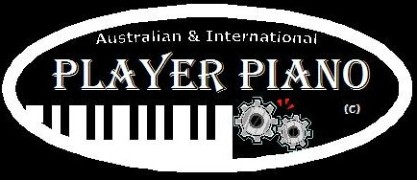Instruments International and Australian owned
This beautifully restored Gulbransen, resides in Indiana USA and you can see the restoration process on the 'Rebuilding a Gulbransen Glued Stack' page.
The Weber Grand Player Piano with Aeolian action 1912 from the Cox Collection NSW Australia
Restoration, nearing Completion.
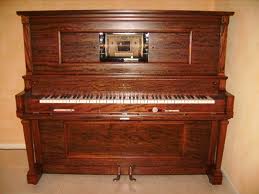
1920 Weber Duo-art Reproducing upright. Cox Collection NSW Australia.
Aeolian Orchestrelle below.


Australians in general, refer to all player pianos as 'pianolas' and piano rolls as 'scrolls'. The Aeolian Company who actually trademarked the name 'pianola' did such a marvelous sales job, that the brand name stuck. Much the same way as people 'hoover' the carpet, regardless of what brand vacuum they may have. Why rolls are refered to as scrolls, is beyond me.
Many fine player pianos exist in Australia and my aim is to display as many as possible, different models on this page.

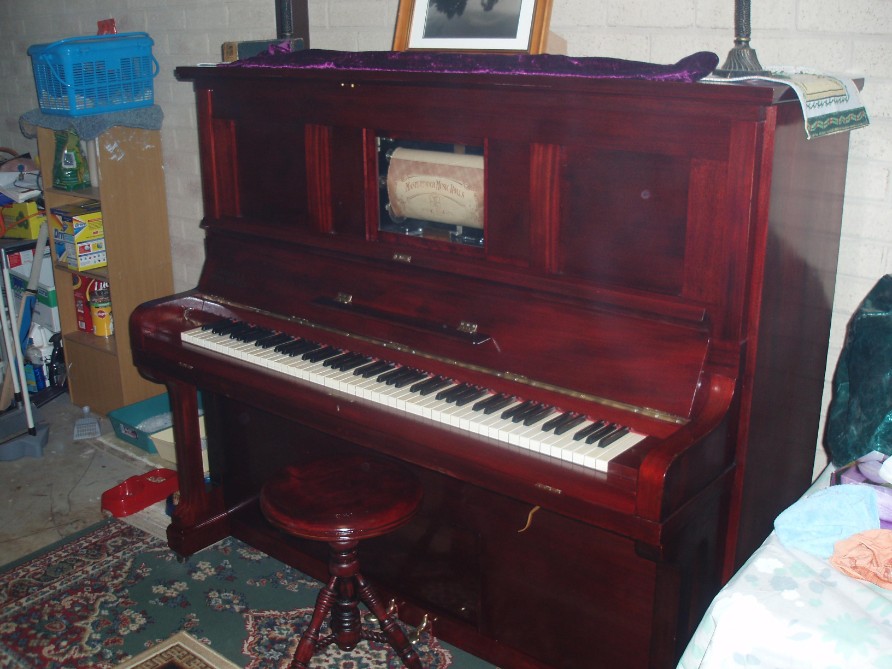
Stems of Dresden 'Grandiola' 1908. One of the most beautiful player pianos, in appearance and quality, that I have ever re-built.

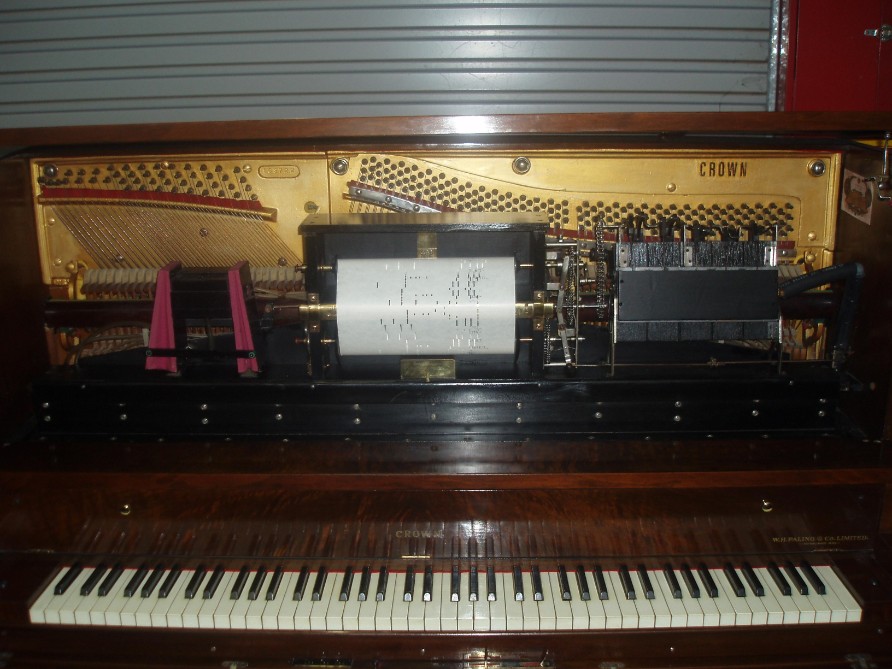
An Auto-piano player inside a Crown piano. The simplicity of design and ease of rebuilding, makes these players an excellent proposition for a first restoration.
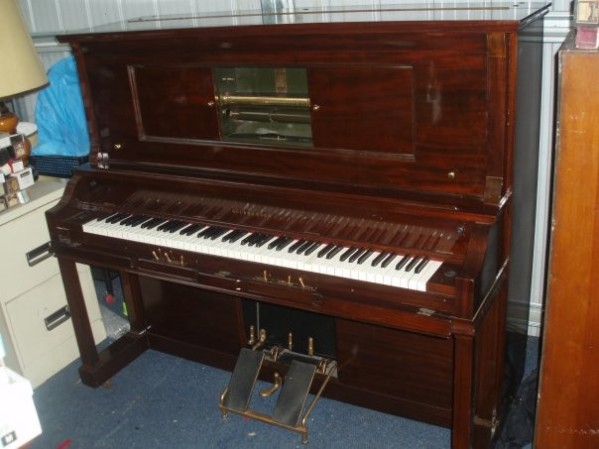
My first restoration was this 1927 Gulbransen Registering 82 noter. This was a baptism by fire as the player was totally dismantled and many parts were missing. All the striker wooden fingers were broken or lost. Not a bad experience as it taught me how they work and to develop some skill in fabricating parts. Ultimately it became again, a very nice player. Even these 'cheaper' models are handsome instruments and well worth the cost of restoration. If one is on offer and you have the room, save it!... I'm betting there will still be a century of entertainment left in it. It's a crying shame if they end up unwanted, broken and thrown to the dump heap.

The following pictures and caption are from a collector in Newcastle NSW and are of his fine German Zimmermann Circa 1908, with early Autoplayer player action, and an interesting history:
"This fine piece of work came into my hands last year (2010) it was on eBay. The
couple who owned it are in their 90's, they had it for over 50 years.
The gentleman passed away early last year 2010, age 95. He spent the last 5
years restoring the pianola, and died not long after. There was one problem,
it did not play, he was broken hearted. The wife was going into a nursing
home and none of the kids wanted it, shame after their dad put so much
love into it. Their loss, my gain. The problem was with the stack:
'The Gentleman had certainly done alot of work on the entire player and piano, at a high standard of workmanship. There was only one error: rather than remove and re-new the old leather facings on all the stack valves, he added a different facing to the valves on top of the old facing. The new leather was not valve leather, and it effectively removed all valve travel, the stack was totally siezed. Due to the previous excellent repair work, it was a minimal task to remove all top and bottom valve facings and replace them with the correct grade of leather to restore lost travel, and a fine player piano found its voice again' - Paul
I have now, over 170 rolls, I love around 70% of them.
I would like to thank Paul for repairing the stack" - Glenn
Gebr. Zimmermann German made player pianos, were widely distributed around Australia from 1900 to around 1915. Fitted with a Themodist style expression system and split stack, they are extraordinarily well made and detailed. The richness of tone and high quality of materials including the player action, make this brand of player piano, well worth saving and restoring.
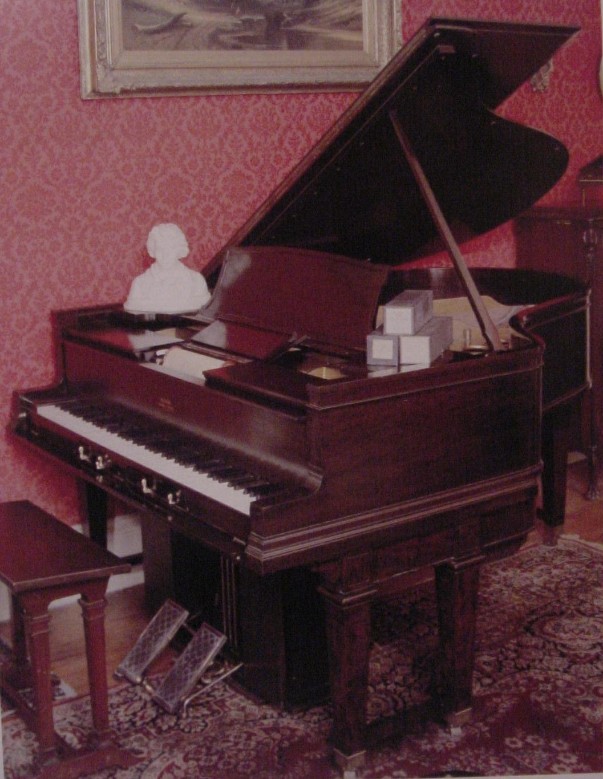
1912 STEINWAY GRAND PIANOLA, Style O - as seen for decades in The Musical Wonder House, our museum from 1963-1986. Today, this instrument shares the ARTCRAFT Studio with the S&S AR-3, being a capable instrument and ideal for sound comparisons during the making of our Master Rolls For Schubert, Kern and Haydn, I'll use the O. For Rachmaninoff, Gershwin and Liszt, I'll use the electric AR Duo-Art in the same Studio.
Photograph and caption courtesy of L.Douglas Henderson. ARTCRAFT Music Rolls Wiscasset Maine.
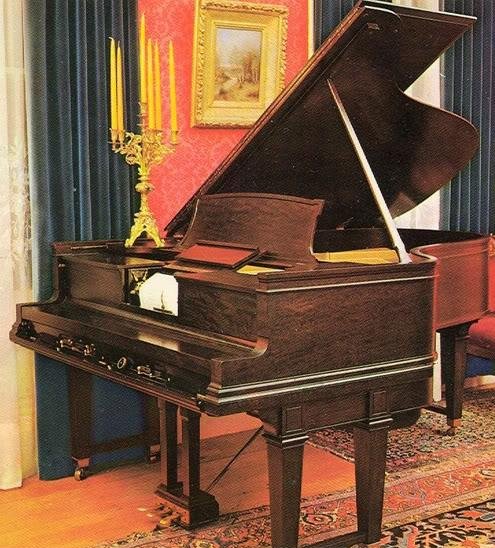
Steinway Duo-Art Pianola, AR - c. 1922. Here is a picture of the instrument at our museum which ran for 23 years around the corner (The Musical Wonder House). The magnificent sounding player has been in the ARTCRAFT Studio since 1986 along with a Steinway pedal O from 1912. This piano is on its 4th set of hammers since my purchase in 1960, so the pianos do get used here! The Studio acoustics and the tone of the hammers "voiced for a player" (diff. from keyboard voicing) has made it ideal for audio recordings. This is the instrument used in connection with the 4 Leabarjans for making/proofing the Master Rolls, here in Maine.
Photograph and Caption, courtesy of: L. Douglas Henderson. ARTCRAFT Music Rolls Wiscasset Maine.

